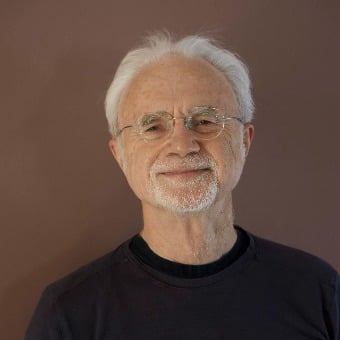
John Adams
The Music of John Adams
The strains of his grandfather’s lakeside New England dance hall were among the earliest layers of John Adams’s aural memory. So too were the marching bands in which he played clarinet as a young student. Learning the basic European canon in front of the family Magnavox, Adams readily assimilated it alongside the crazy quilt of American vernacular music he encountered in the early postwar decades. Duke Ellington is a recurrent inspiration, and Adams’s love of jazz—which returns in unexpected forms, such as the improvisatory “hypermelody” of the Violin Concerto (1993) or the electric violin’s raga-like musings in The Dharma at Big Sur (2003)—was early nurtured by his parents’ activities in jazz groups. As a student at Harvard during the cataclysmic upheavals of the late Sixties, Adams experienced the cognitive dissonance of the arid pronouncements of contemporary serialists when confronted with the fresh, Dionysian inventiveness of this golden age of rock.
Adams eventually found his voice in the loosely experimental atmosphere of the California Bay Area where he relocated in his twenties. The Minimalist aesthetic lighted the way for Adams to reactivate the energetic pulsation and tonal basis of the jazz and rock idioms which seemed to legitimize the “pleasure principle” of listening. Yet early on Adams saw beyond the inherent limitations of Minimalism to a larger musical vision, as the seminal string septet Shaker Loops made clear. Already in his breakthrough orchestral works written for the San Francisco Symphony–culminating in Harmonielehre–Adams was displaying a genius for revitalizing the lofty rhetoric of romanticism and large forms with a contemporary sensibility. At the same time his early fascination with electronic music grew into a technologically enhanced palette that marries acoustic and synthesized sounds. Among Adams’s most experimental soundscapes are the Pulitzer Prize-winning On the Transmigration of Souls and the music to depict the desert test site for the bomb in Doctor Atomic. From this array of influences, Adams continually generates new, unexpected compounds. His career can be viewed, as the composer puts it, as a quest “to forge a language, Whitman-like, out of the compost of American life.”
This grounding in the vernacular can lead to surprisingly witty collisions, such as the Chamber Symphony’s mash-up of early Schoenberg with cartoon soundtracks. Alongside the rascally, Mark Twain-like “trickster” humor is a vein of deeply felt nostalgia and rueful intimacy that can evoke the elegiac, unsentimental tenderness of Copland. Adams is among the most frequently choreographed of contemporary composers in part because of the fascinating contexts in which he situates his dramatically propulsive rhythmic sensibility. He also refracts the pioneering perspective of Charles Ives, who remains a role model for keeping “the vernacular roots of the art alive” while experimenting without inhibition.
Adams’s uniquely American perspective comes into intense focus in his operatic work, beginning with 1987’s Nixon in China, whose theatrical depiction of the cultural clash between Communism and Capitalism revitalized the genre for an entire generation. Adams’s works for the stage have profoundly shaped not just the evolution of his own musical language but contemporary perceptions of opera and its possibilities. His choice of subject matter in collaboration with long-term artistic partner Peter Sellars, while sometimes controversial, is rooted in the mythic potential of contemporary icons and events. Adams strives to create an American opera with larger cultural implications, a work of art that addresses the defining conflicts of our time without pap solutions, whether terrorism (in The Death of Klinghoffer), the experience of urban immigrants (in the millennial oratorio/opera El Niño), or the beginning of the atomic age (Doctor Atomic). Yet Adams continues to draw on the inspiration of old masters, as in the Mozart-tinged A Flowering Tree, in which an ancient South Indian folk tale proves a fertile source for yet another act of cultural cross-pollination. Adams has become a representative 21st-century composer who continues to find ideal subjects for his own art of musical metamorphosis.
Thomas May, 2008
(Thomas May is the editor of The John Adams Reader and author of Decoding Wagner, both from Amadeus Press. He writes frequently about music and theater.)
